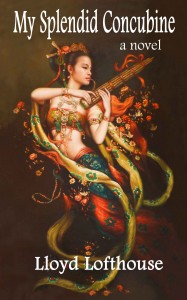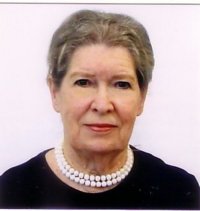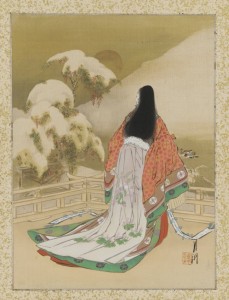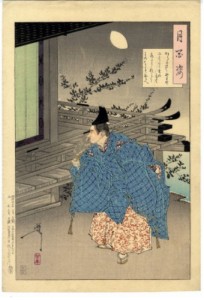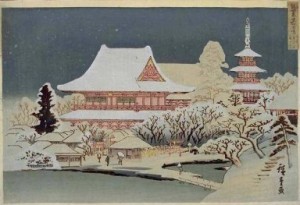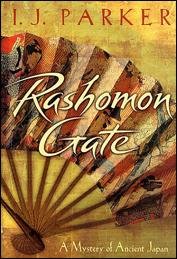Relevant History welcomes Lloyd Lofthouse, award-winning historical fiction author of My Splendid Concubine, the love story of Sir Robert Hart and a Chinese woman. For more information, check out Lloyd’s web site and author blog, and read the first chapter of his latest novel, multi-award winner Running with the Enemy.
*****
It could be argued that the British Empire and the United States are responsible for World War II in the Pacific and Mao Zedong winning China’s Civil War in 1949.
Before my wife told me in 1999 about Sir Robert Hart, I knew little about Japan and China. My knowledge of Japan, for instance, was the bombing of Pearl Harbor (December 7, 1941), the Doolittle Raid on Tokyo (April 18, 1942) and the dropping of atomic bombs on Hiroshima and Nagasaki on August 6 and 9, 1945.
I knew less about China, but that changed after my wife introduced me to Robert Hart. First, I read his journals and letters that had been published by Harvard. It was while researching for several years and writing My Splendid Concubine—based on Robert Hart’s real-life love story with a Chinese concubine named Ayaou—that I discovered the horrors that had been forced upon Asia in the 19th century by countries like Great Britain, France, Germany, and the United States.
The British and the French fired the first salvo starting the Opium Wars in 1839–1842 and then again in 1856–1860. The reason: China’s emperor refused to allow the British and merchants of other western countries—including the U.S.—to sell opium without restrictions to the Chinese people. In addition, the treaties allowed Christian missionaries the freedom to go anywhere in China and convert and save the souls of heathen Chinese.
As Christian missionaries were saving these souls, they converted a failed Confucian Scholar, Hong Xiuquan, who soon claimed that he was the younger brother of Jesus Christ; he published a Bible in Chinese after writing and including his own gospel. Then he led the 19-year Taiping rebellion that’s considered the bloodiest rebellion in human history with 20–100 million Chinese killed by the time he was defeated. And because God’s Chinese son was against the opium trade, Christian British and French troops joined in the fight, including American mercenaries, to defeat the Taipings. As for Japan, in 1846, America made its first attempt to open Japan for trade. Commander James Biddle anchored in Tokyo Bay with two ships, including one warship armed with 72 cannons, but his requests for a trade agreement were unsuccessful.
The Japanese, similar to the Chinese, didn’t want anything to do with the Western barbarians, but those barbarians weren’t about to accept no for an answer and miss an opportunity to find new markets for their growing consumer-based economies. Customers were to be gained; cheap labor was to be had, and this would lead to increased profits for European and American companies.
A few years later in 1852, Commodore Matthew C. Perry returned to Japan and turned his canons on the town of Uraga. The Japanese demanded he leave. In answer, Perry ordered some buildings in the harbor shelled. When Perry returned in February 1854 with twice as many ships, the Japanese agreed to virtually all of President Fillmore’s demands for trade with America.
It would take Japan almost a century to transition from a primitive, feudal agricultural-based economy to an imperial industrial power ready to wage war in 1937 with a goal to take Asia back from the Western powers that were exploiting and colonizing the region. To achieve this objective, Japan attacked China because it needed China’s resources.
If America had left Japan alone, Japan may have stayed an agricultural-based economy, and there would have never been the invasion of China in 1937.
It was Japan’s invasion of China that eventually caused the defeat of the Nationalist Chinese led by Chiang Kai-Shek in 1949 when the Chinese Communist Party (CCP) led by Mao Zedong won the civil war that had raged from April 1927 to December 1937—with a break during World War II as both the Nationalist (KMT) and the Communists fought Japan. The Chinese Civil War resumed in March 1946.
Fighting Japan cost the KMT 1.3-million KIA; 1.8-million WIA and the CCP 500,000 KIA/MIA. The KMT fought a traditional war while the Communists practiced guerrilla warfare. During World War II, most Chinese lost trust in the Nationalists who clearly wanted to return China to the way it had been before the Civil War when the average life span was age 35, and more than 95% of Chinese lived in extreme poverty and were often treated worse than animals by those at the top of the economic pyramid.
By June of 1949, the Red Army had four million troops fighting Chiang Kai-shek’s 1.5 million. What would have happened to China and Japan in the 20th century if the United States and Great Britain had not forced both countries to open markets to unwanted products and religions in the 19th century?
*****
A big thanks to Lloyd Lofthouse. He discusses his research for My Splendid Concubine in this video and presents a timeline of China’s history here.
**********
Did you like what you read? Learn about downloads, discounts, and special offers from Relevant History authors and Suzanne Adair. Subscribe to Suzanne’s free newsletter.


